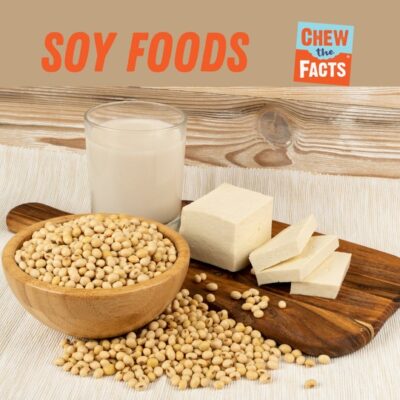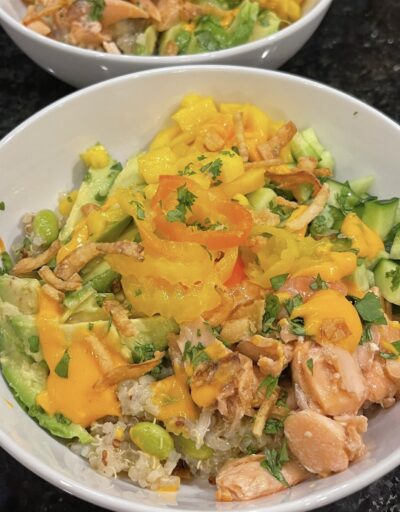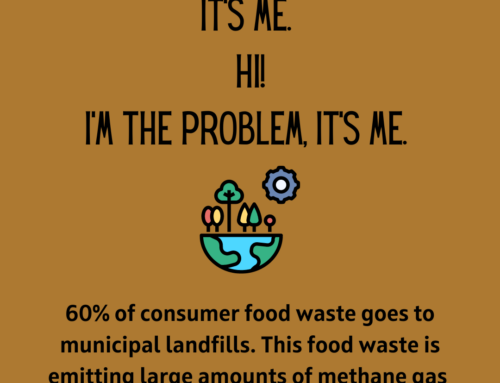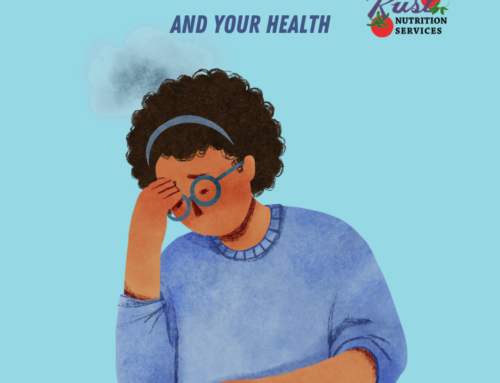There is so much misinformation about soy and soy foods. It’s been blamed for everything from breast cancer to male feminization. Let’s take a quick look.
Research on Women
There is a lot of research surrounding the health benefits of soy for women. In fact, including soy foods may actually reduce breast cancer risk. This meta-analysis reviewed seven cohort studies and 17 case-control studies. It found that when the diet included less than 10 mg/day of isoflavones there was no effects on breast cancer risk . The researchers observed an inverse association between isoflavone intake and breast cancer – the more added, the lower the risk. As they increased isoflavone intake (by 10 mg/day) they observed reductions in breast cancer risk.
Research on Men
The myth that isoflavones in soy (phytoestrogens) may feminize men continues to be spread. I’ve seen many comments and posts on social media that perpetuates this myth. In reality, there is no science supporting this. This meta analysis determined whether soy or isoflavone intake affects testosterone, estradiol, and other sex hormones in men. The 41 studies reviewed researched adult men who consumed soyfoods and soy protein. They found no significant effects of soy protein or isoflavone intake on any of the outcomes measured. Other studies have looked at the inclusion of soy protein versus animal protein in performance and muscle building, and found no significant differences.

Processed Food
The phrase “eat less processed food” has become a popular soundbite, but it’s not that simple. Many soy products, such as tofu or soy milk, fall into this category, but provide important nutrients and offer options to people who are vegetarian or lactose intolerant. Studies show however, that there’s no association between processed food and risk for heart disease, diabetes or cancer.
Learn more about soy and how to add it to your diet here.

Salmon Bowls with Edamame & Mango
Ingredients
Bowls
- 10-12 ounces salmon
- 1 teaspoon olive oil
- 1 teaspoon soy or teriyaki sauce
- 1 pouch quick-cooking rice or quinoa
- 1 cup frozen, shelled edamame
- 1 small cucumber diced (or about a cup diced)
- 1 mango peeled and diced
- 1 ripe avocado sliced
- 4 teaspoons chopped parsley or scallions
Dressing
- Juice from one small orange
- 1 tablespoon olive oil
- 1 teaspoon rice wine vinegar
- Dash of soy sauce
- ½ teaspoon garlic powder
Sriracha Mayo
- 2 tablespoons mayonnaise
- 1/2 teaspoon soy sauce
- 2 teaspoons honey
- 1 teaspoon sriracha
Optional Garnish
- 3 tablespoons crispy fried onions
- Banana pepper rings optional
Instructions
- Drizzle 1 teaspoon of olive oil and soy sauce over salmon. Bake salmon filet for 10 minutes in a 375 oven. Cool slightly then remove skin by sliding a knife under the filet. Transfer to small bowl, flake, and set aside. While Salmon bakes, cook the edamame and rice. Microwave rice according to package directions, then set aside. Add edamame to a small microwave safe bowl with 1/4 cup of water. Microwave for 1-2 minutes, drain and set aside.
- Divide rice between two bowls. Arrange cucumber, mango, edamame, and sliced avocado atop the rice, in sections. Mix the dressing in a small bowl or jar. Drizzle the dressing over rice and veggies.
- Mix the sriracha mayo ingredients in a small bowl. Top veggie bowl with flaked salmon and parsley. Drizzle the mayo mixture over the bowl. Garnish with crispy onions and peppers if desired.




